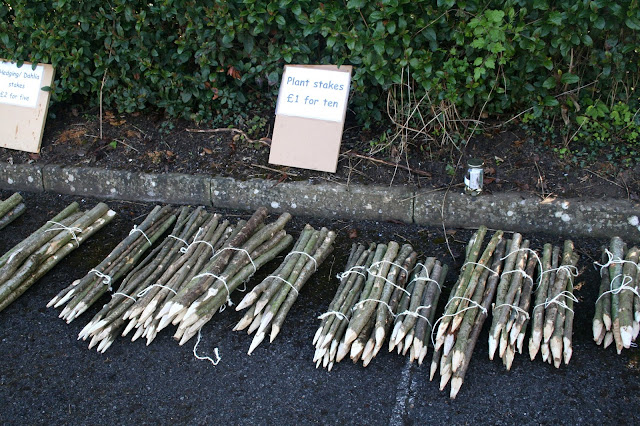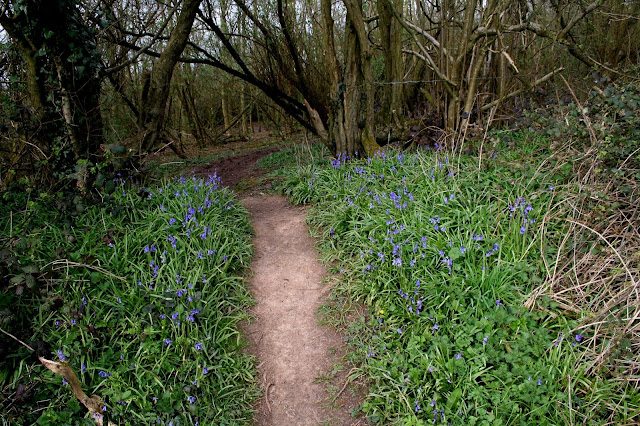Instead of April showers today's sunny afternoon gave a display of April flowers. Most wild flowers are smaller and less dramatic than cultivated varieties but beautiful in their profusion or when you get down close to them.
Ground ivy on the hedge bank near the entrance
Not to be confused with red dead nettle, which is pink rather than blue.
And here are some white dead nettles growing amongst stinging nettles. Deadnettles are not related to stingers; they just look similar, which gives them protection.
If these were rare, people would rave about them. The dandelion flush is late this year; it usually comes in March
Celandines are still shining
This little clump was under some blackthorn
Nearby on the steps, the sun had brought out some violets
And of course the bluebells, which have increased enormously at Filnore Woods in the last few years
What's that interesting blue flower on the ash trees roots, I wondered.
Oh dear.
I picked several of these fragrant blooms today and carried them home to a rubbish bin.
Primroses are begining to go over but there are still some nice clumps in the Valley Wood
And between posts 9 and 10, I found these tiny barren strawberries.
They are not the plants that produce juicy fruits; just little nutlets. You can tell because the sepals show in the gaps between the petals
And when they are not in flower, the leaves are different. Like the fruity wild strawberries, the leaves are composed of three leaflets. The last tooth on the end of the central leaflet of a true wild strawberry leaf is longer than the teeth to either side, but on the barren strawberry its so small you can hardly see it.
And although they are not so spectacular, we must celebrate the profusion of Dog's Mercury.
It's an indicator that Filnore is an ancient woodland site.



























































